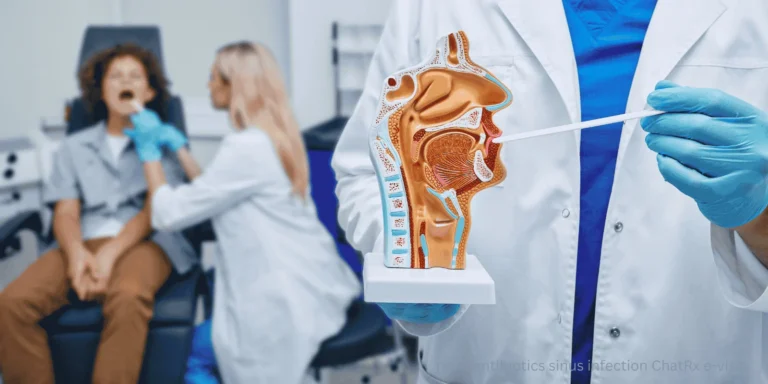Distinguishing between viral and bacterial sore throats helps determine whether antibiotics are needed, though some cases require professional evaluation for accurate diagnosis.
Bacterial sore throat characteristics: Sudden onset is typical of bacterial infections, particularly strep throat. Many patients tell me they felt fine at bedtime but woke up with severe throat pain.
High fever (101°F or above) commonly accompanies bacterial throat infections.
Severe pain that makes swallowing difficult or painful, often described as feeling like “swallowing glass.”
White or yellow patches on the throat, tonsils, or back of the mouth.
Swollen, tender lymph nodes in the neck that are painful to touch.
Absence of cold symptoms – bacterial throat infections rarely include a runny nose, sneezing, or cough.
Viral sore throat characteristics: Gradual onset over 1-2 days, often starting as mild throat irritation that slowly worsens.
Low-grade or no fever in most cases, though some viral infections can cause higher fevers.
Associated cold symptoms including a runny nose, sneezing, nasal congestion, and cough.
Hoarse voice or voice changes are more common with viral infections.
General body aches and fatigue often accompany viral illnesses.
Red, irritated throat without white patches or severe swelling.
Timing and progression patterns: Bacterial infections typically reach peak severity within 24-48 hours and maintain that intensity.
Viral infections gradually worsen over 2-3 days, then slowly improve over the following week.
Age considerations: Strep throat is more common in children and young adults (ages 5-25) than in older adults.
Viral throat infections can affect any age group and are the most common cause of sore throat overall.
When symptoms overlap: Some cases present with mixed features that make diagnosis challenging. Professional evaluation may be needed when:
- Moderate symptoms that could be either viral or bacterial
- High fever with cold symptoms
Treatment implications: Viral sore throats resolve on their own with supportive care (rest, fluids, pain relievers).
Bacterial infections require antibiotic treatment to prevent complications and reduce contagiousness.
Red flag symptoms:
- Difficulty opening your mouth
- Severe difficulty swallowing
- Drooling due to inability to swallow
- Muffled or “hot potato” voice
If you’re experiencing a severe sore throat with fever, especially with sudden onset, ChatRx can help evaluate your symptoms and determine if antibiotic treatment for strep throat is appropriate.













